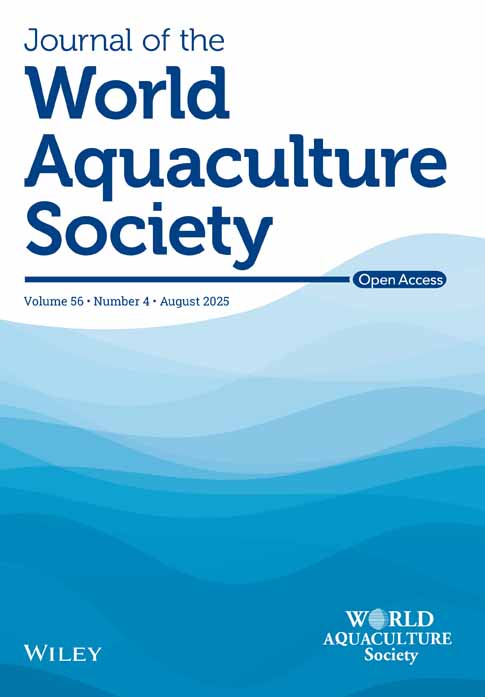A Methodology for Evaluation of Dietary Feeding Stimulants for the Pacific White Shrimp, Litopenaeus vannamei
Abstract
A simple and practical method for quantification of feeding stimulation of shrimp Litopenaeus vannamei was developed using feed preference as an index of comparison. Feed preference was defined as the percentage of shrimp observed in each feeding tray. Preliminary trials were undertaken with two commercial feeds (45% protein with 5% squid meal and 40% protein without squid meal). Results indicated the following criteria were suitable for use as methodology for evaluating feeding stimulation in 5-m diameter static flow tanks: shrimp density (2.5 shrimp/m2); observational period (1 or 2 h post-addition of feed to trays), feed rate (2%), and between-trial feed rate (2%). A further investigation was undertaken to evaluate the influence of protein level and source on feed preference using a basal diet consisting of wheat flour, casein, carboxymethyl cellulose binder, and limestone, with or without krill meal as a feeding stimulant. A significant difference was shown in feeding preference for the 16% protein/4% krill meal vs. one without krill meal; however, this relationship was not shown in 45% protein feed comparisons. A second trial comparing 0, 16,30, and 45 % protein/casein-based feeds showed similar results. From these findings, it was postulated that casein, itself, also serves as a feeding stimulant at high dietary inclusion levels. A third trial comparing 16% protein/casein or wheat gluten-based feeds Indicated a delay of at least 2 h in maximum feeding preference response in feeds in which 4% krill meal was added as a feeding stimulant. It was postulated that chemical stimulants from krill meal were more slowly released in wheat gluten-based feeds. Our methodology appears suitable for evaluation of potential feeding stimulants when incorporated into low-protein casein-based or wheat-gluten-based feeds.




